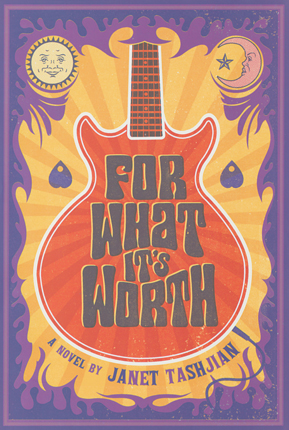Full Text Reviews: School Library Journal - 07/01/2012 Gr 7 Up—Set in the music mecca of Laurel Canyon, CA, in the early 1970s, this story chronicles Quinn's struggles with the insecurities and nuances of adolescence as he navigates painful discoveries about the times in which he resides. It is first and foremost a well-written, sensitive coming-of-age story. The 14-year-old lives and breathes rock 'n' roll and his candid, self-deprecating narrative is interspersed with the incredibly detailed music columns and lists that he writes for the school newspaper. When Caroline becomes his first girlfriend, no one is more surprised than Quinn. Tashjian is spot-on as she describes the boy's growing awareness of the world, developing understanding of his parents as people, and awakening to varied injustices. She masterfully focuses on the teen's personal journey from a one-dimensional rock-music addict to a young man trying to cope with bigger issues. Up to this point, Quinn's worldview has been focused like a laser beam, but outspoken discussions initiated by one of his teachers awaken him to awareness of the Vietnam War, as does Caroline's sadness when her brother is drafted. When Brett, a draft dodger and a friend of his sister, shows up, Quinn takes courageous risks to help Brett make it to Canada. He creates Club 27 and uses a Ouija board to seek advice from Janis Joplin and other rock musicians who oddly and coincidentally died at the age of 27. Tashjian's talent for characterization is evident throughout, most notably in Quinn. Fans of Blake Nelson's Rock Star Superstar (Viking, 2004) should enjoy this quirky, absorbing book.—Renee Steinberg, formerly at Fieldstone Middle School, Montvale, NJ - Copyright 2012 Publishers Weekly, Library Journal and/or School Library Journal used with permission. Bulletin for the Center... - 09/02/2012 The year is 1971, and Quinn, a music-crazy middle-schooler, is living in Laurel Canyon, Los Angeles, the nexus of the exploding rock-and-roll scene. Everything in his life seems on the cusp of great change: his beloved older sister has just left for college, new girl Caroline becomes his first girlfriend (shortly after becoming the first girl he ever has a real conversation with), and Frank Zappa hires him to transcribe his music. At the same time, larger changes are threatening to rock Quinn’s world, as the draft and the Vietnam War edge ever further into his protected world by a way of a draft dodger who asks for his help and the classroom conversations that challenge his priorities. Then, in the midst of all this, Quinn’s Ouija board starts giving him messages from Janis Joplin, Jimi Hendrix, and Jim Morrison, all recently deceased. There’s a whole lot of plot crammed into this book, and not all of it works; readers may find it easier to suspend disbelief for the Ouija board conceit than for the connections Quinn has to a who’s-who of celebrities. In addition, the text is heavy with underexplained references that may alienate more than they educate readers who can’t already place them. Tashjian nonetheless captures the anything-can-happen energy of this particular historical moment and the infectious excitement of the explosion of creativity in 1970s musical culture. The dissonances and convergences between the anxieties of war and protest and the escapism of rock-and-roll party culture are compellingly mapped, providing readers insight into some watershed historical and cultural moments. The narrative is intercut with song and album lists and transcripts of Quinn’s school-newspaper music column, “For What It’s Worth,” which is a fount of fascinating music trivia. CG - Copyright 2012 The Board of Trustees of the University of Illinois. Loading...
|



